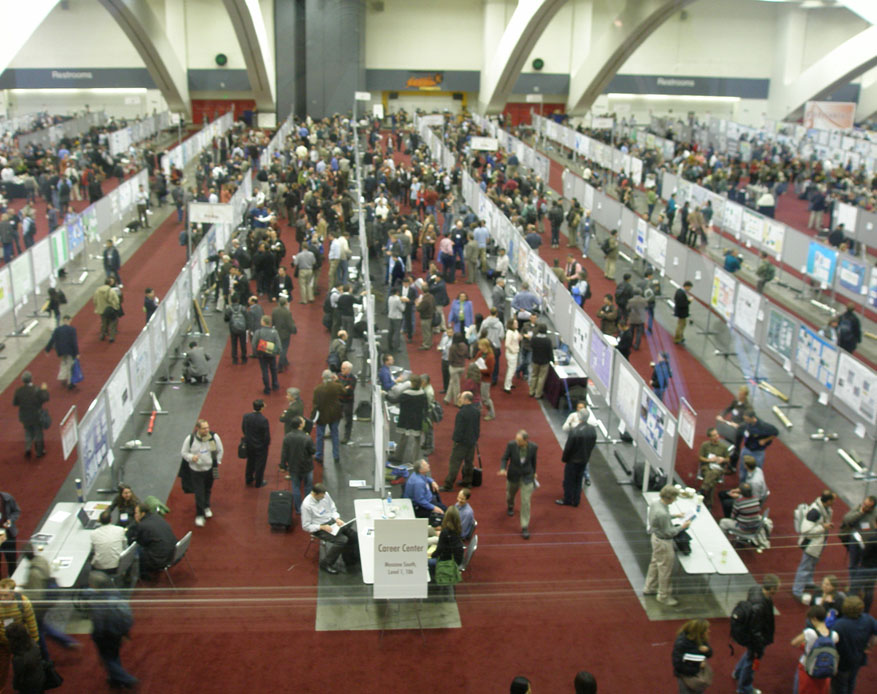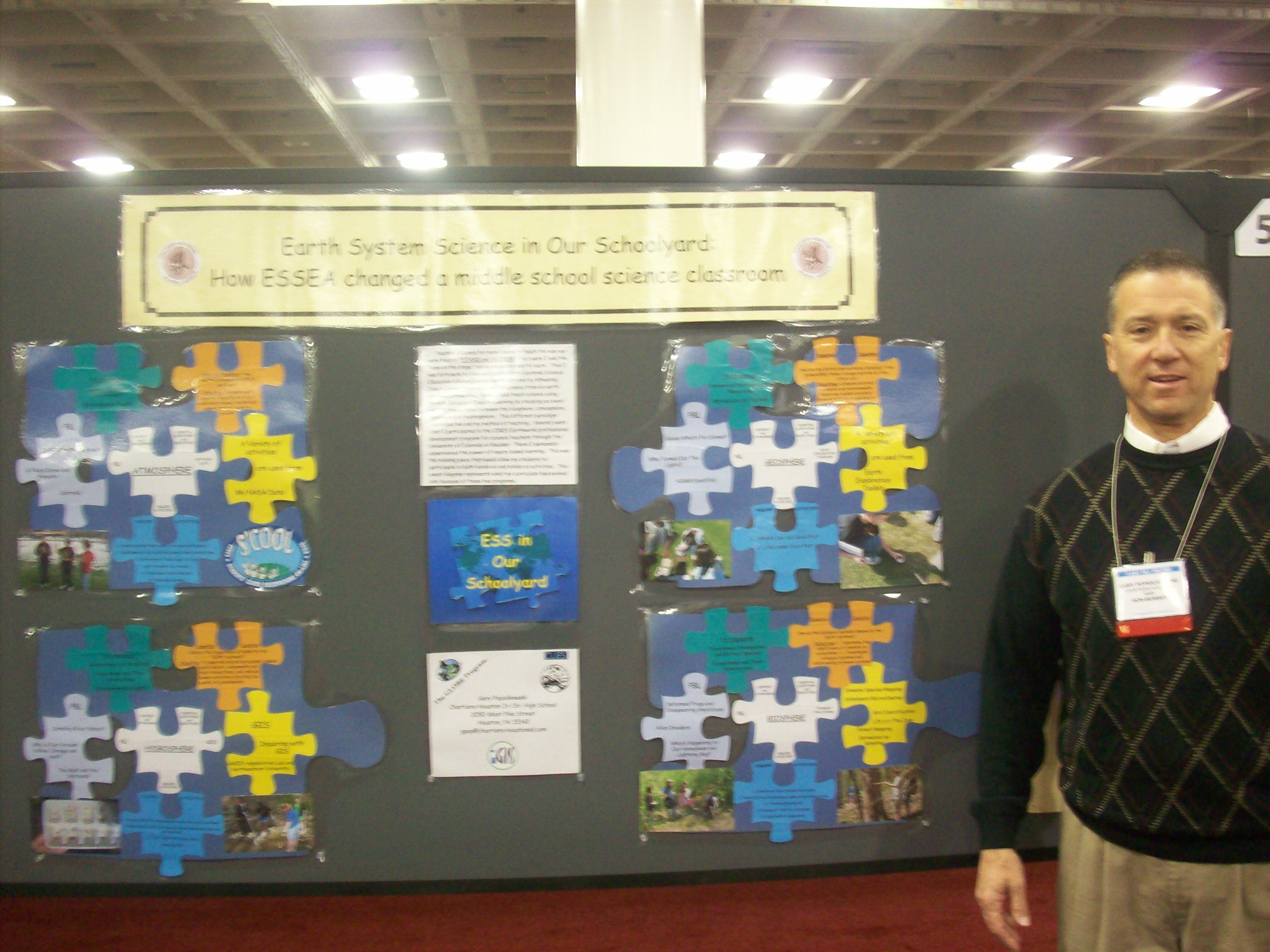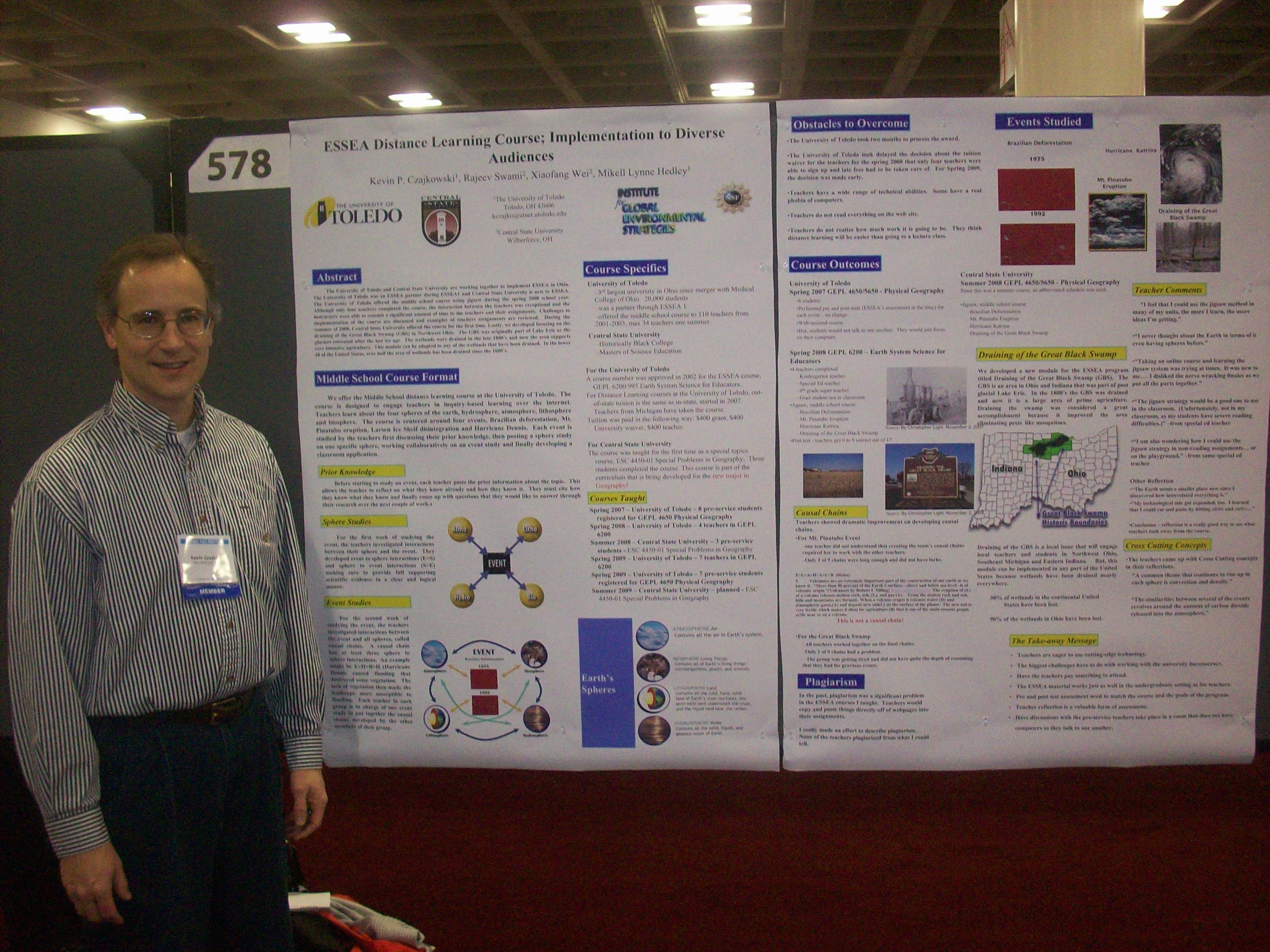By taking your measurements for Dr. C., you are participating in science. Lots of scientists take measurements of different kinds to test new ideas, or to figure out how to measure things in new ways, like, for example, using a satellite instead of taking measurements everywhere on the ground. (You need to compare the new measurement with an old one that you trust.). Scientists analyze the data, and then they present the results at conferences like the one described below, and write articles about the results in scientific journals. When scientists write articles, the journals send the papers to other scientists for their opinions and suggestions before the article is ever published. These comments, and the comments from colleagues at conferences like this one for American Geophysical Union, helps scientists refine their ideas and present them more clearly to others. Also important are chance (or arranged) meetings with other scientists in the halls, next to a poster, or over coffee. Lots of fun and important ideas are exchanged at such conferences, and scientists can come away with totally new ideas about what to do next. — PL
Today I am blogging from San Francisco, California. I am attending the American Geophysical Union (AGU) meeting in San Francisco, California. It is a meeting that I try to come to every year. AGU is a professional organization made up of scientists who study the Earth and our solar system.
A conference like this one is a way for scientists to share information. The picture below shows how the scientists show each other the research they have performed. You might be thinking, “Dr. C, that looks a lot like a science fair that my school has.” You would be right. Poster presentations are very similar to science fair projects that students do.

Figure 1. Poster session at the AGU meeting.
Coming to the AGU meeting gives me a chance to see my scientist friends. My friend Claudia Alexander is the lead scientist on the Casini-Huygen project and Rosetta mission for NASA. The Casini-Huygen project is a satellite that is studying Saturn and its moon Titan. The Rosetta mission is going to study what makes up comets.
I presented a poster on an Earth System Science education course that I teach. Teachers take the course to continue their learning. You may have not known that either. Below is a picture of Gary Popiolkowski. He is a seventh and eighth grade science teacher at Chartiers-Houston Jr./Sr. High School in Houston, Pennsylvania. His students made the poster for him. It is a great poster as you can see from the picture. He mentioned to me how proud he was of his students for designing and making the poster.

Figure 2. Teacher Gary Popiolkowski

Figure 3. It’s me, Dr. C in front of my poster at AGU.
Dr. C
